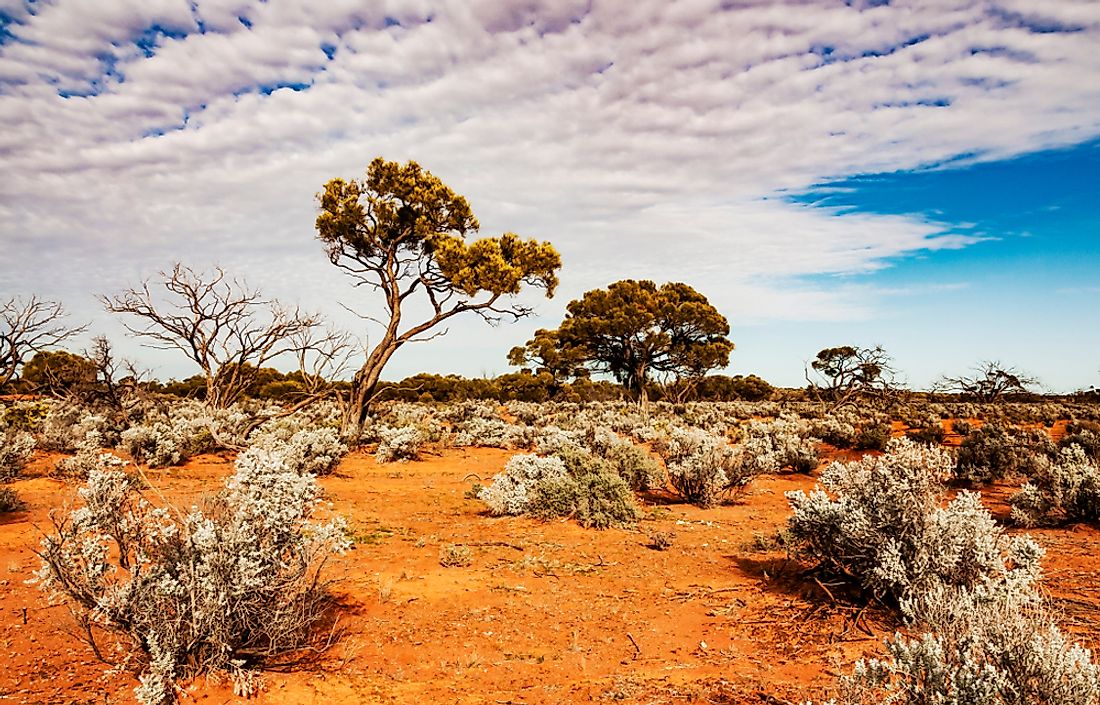The World's Driest Continent

Technically the driest continent on Earth is Antarctica; the continent is however not inhabited by human societies apart from research teams and explorers who at time venture into the vast wilderness. Australia is, therefore, the world’s driest inhabited continent on earth. Australia is also the smallest continent occupying a land mass of about 2.97 million square miles which is about 5% of the Earth's land mass, as well as the lowest and flattest continent.
Comparing Australia's Dryness To Other Continents
The continent is established as the driest continent despite other larger continents such as Africa having larger areas of deserts. The Sahara Desert, for example, occupies a larger land area than Australia. The African continent, however, has other large parts that receive considerable precipitation including the Congo rainforest which is the second largest equatorial rain forest in the world. Australia has the highest percentage of dry climates across the whole land mass. About 50% of the continent’s landmass receives 11.8 inches per year or lower while 80% of the landmass receives 23.6 inches per year or lower. The continent also has incredibly high evaporation rate with over 75% of the land mass experiencing a potential evaporation rate that is higher than 98.4 inches per year. Some areas in central Australia are known to experience potential evaporation of about 177.2 inches per year, which is roughly 20 times greater than the annual rainfall. About 20% of the country is classified as a desert, and the rainfall exhibits a concentric pattern around the arid core of the nation with some coastal areas and the tropics experiencing rainfall at a high intensity.
Australia’s Climate
The climate in Australia is influenced by the land size and the sinking hot air of subtropical high-pressure belt, which move south and north in tandem with the seasons. The climate varies widely with droughts lasting several months, which is thought to be caused by the El Nino Southern Oscillation. The wide variation in climatic conditions is partly as a result of the geographical size of the continent, and a significant portion of the continent is either semi-arid or desert. Only small portions of the southwest and southeast corners of the continent experience temperate climate and have moderately fertile soils. Towards the northern part of the country have a tropical climate, with some tropical rainforests, deserts, and grasslands lying in between. The climate of the continent is also influenced by ocean currents that affect the dryness of the continent and contribute to the cyclones to the north of Australia, which is produced by seasonal tropical low-pressure systems.
Biodiversity in Australia
The forests in Australia consist typically of evergreen species like the eucalyptus especially in the arid regions, while the wattles are common in the deserts and drier regions. Some of the famous Australian animals are the monotremes, which include the echidna and the platypus and marsupials like the kangaroo, wombat, and koala. Some of the common birds include kookaburra and the emu. Australia is a host to numerous of the world’s most venomous snakes. It is believed that many plants and animals became extinct immediately after human settlement, which includes Australia’s megafauna.











